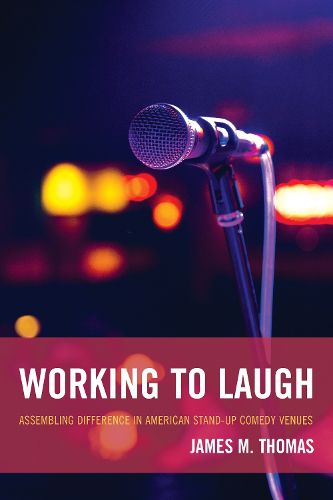Readings Newsletter
Become a Readings Member to make your shopping experience even easier.
Sign in or sign up for free!
You’re not far away from qualifying for FREE standard shipping within Australia
You’ve qualified for FREE standard shipping within Australia
The cart is loading…






For decades, stand-up comedy has been central to the imbrication of popular culture and political discourse, reshaping the margins of political critique, and often within the contexts of urban nightlife entertainment. In Working to Laugh: Assembling Difference in American Stand-Up Comedy Venues, James M. Thomas (JT) provides an ethnographic analysis of urban nightlife sites where this popular form of entertainment occurs. Examining the relationship between the performance, the venue, and the social actors who participate in these scenes, JT demonstrates how stand-up venues function as both enablers and constrainers of social difference, including race, class, gender, and heteronormativity, within the larger urban nightlife environment. JT’s analysis of a professional comedy club and a sub-cultural bar that hosts a weekly comedy show illuminates the full range of stand-up comedy in the American cultural milieu, from the highly organized, routinized, and predictable format of the professional venue, to the more unpredictable, and in some cases, cutting edge format of the amateur show.
$9.00 standard shipping within Australia
FREE standard shipping within Australia for orders over $100.00
Express & International shipping calculated at checkout
For decades, stand-up comedy has been central to the imbrication of popular culture and political discourse, reshaping the margins of political critique, and often within the contexts of urban nightlife entertainment. In Working to Laugh: Assembling Difference in American Stand-Up Comedy Venues, James M. Thomas (JT) provides an ethnographic analysis of urban nightlife sites where this popular form of entertainment occurs. Examining the relationship between the performance, the venue, and the social actors who participate in these scenes, JT demonstrates how stand-up venues function as both enablers and constrainers of social difference, including race, class, gender, and heteronormativity, within the larger urban nightlife environment. JT’s analysis of a professional comedy club and a sub-cultural bar that hosts a weekly comedy show illuminates the full range of stand-up comedy in the American cultural milieu, from the highly organized, routinized, and predictable format of the professional venue, to the more unpredictable, and in some cases, cutting edge format of the amateur show.